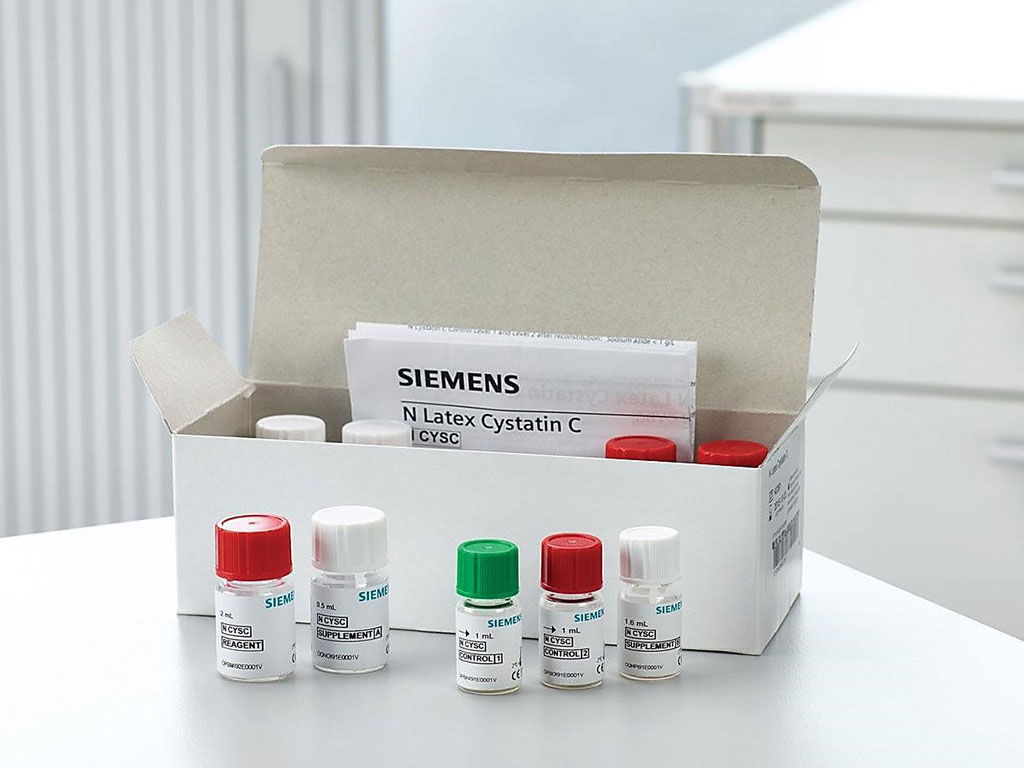Serum Creatinine-to-Cystatin C Ratio Predicts AKI Mortality
By LabMedica International staff writers
Posted on 05 Nov 2020
Acute kidney injury (AKI) is a common and serious complication among critically ill patients and often requires continuous renal replacement therapy (CRRT). Owing to the high mortality risk associated with kidney injury development, identifying effective risk factors for outcome is imperative in AKI patients being treated with CRRT.Posted on 05 Nov 2020
Creatinine is mainly released from muscle tissue, and therefore its serum concentration is influenced by whole body muscle mass. Cystatin C, on the other hand, is universally produced by nucleated cells. Both creatinine and cystatin are commonly measured to estimate kidney function. Under situations of kidney injury, creatinine and cystatin C exhibit variable kinetics and their levels may vary rapidly.

Image: The N Latex Cystatin C is a latex-enhanced immunonephelometry assay. The serum Creatinine-to-Cystatin C ratio predicts acute kidney injury mortality (Photo courtesy of Siemens Healthineers).
Nephrologists at Yonsei University College of Medicine (Seoul, Republic of Korea) studied 1,588 patients who underwent CRRT in a single tertiary center intensive care unit between August 2009 and June 2019. The mean age was 64.7 ± 14.5 years and 635 patients (40.0%) were female. Among all subjects, 886 (55.8%) had hypertension and 597 (37.6%) were being treated for diabetes mellitus.
The scientists collected laboratory data included complete blood cell counts, serum blood urea nitrogen (BUN) levels, creatinine and cystatin C, albumin, and electrolytes. Serum creatinine levels were determined using an isotope dilution mass spectrometry-traceable method at a central laboratory, and cystatin C levels were measured by immunonephelometry, with calibration against the reference. The ratio of creatinine (mg/dL) to cystatin C (mg/L) was calculated from values measured concomitantly at baseline.
The investigators reported that the range of creatinine:cystatin C ratio was 0.08-10.48. The 30- and 90-day mortality rates were significantly lower for the higher creatinine:cystatin C ratio groups. Multivariable Cox proportional hazards regression analyses revealed that the mortality risk decreased successively across quartiles of increasing creatinine:cystatin C ratio. When creatinine:cystatin C ratio was evaluated using cubic spline analyses, the risks for both 30- and 90-day mortality were lower with higher creatinine:cystatin C ratios. These associations remained significant even after adjustment for confounding variables. A total of 954 (60.1%) and 1,055 (66.4%) deaths occurred within 30 and 90 days of CRRT initiation, respectively.
The authors concluded that the creatinine:cystatin C ratio is associated with survival in ICU patients with AKI undergoing CRRT. This ratio may be used as a practical prognosis risk American Journal of Kidney Diseases.




 assay.jpg)









